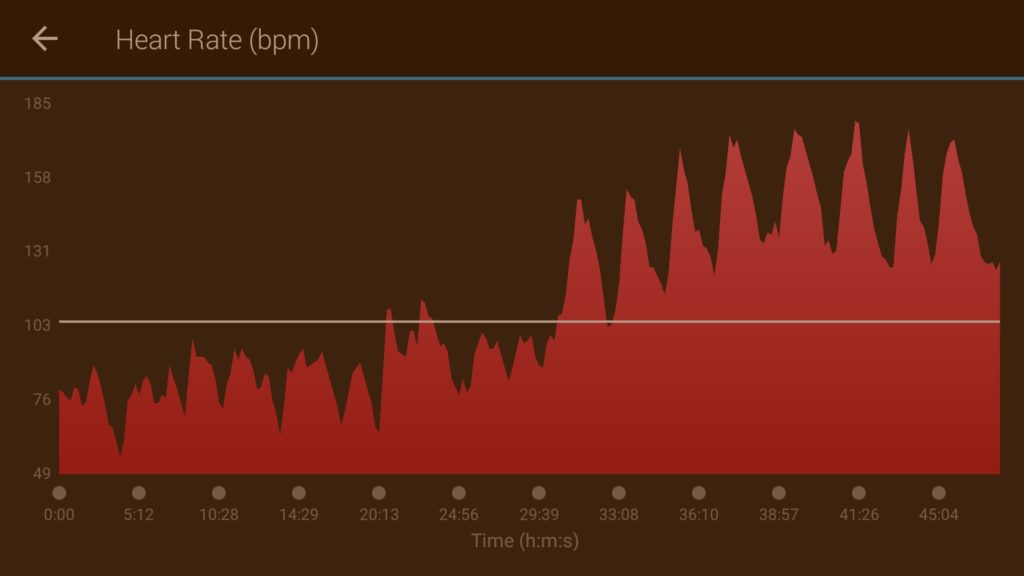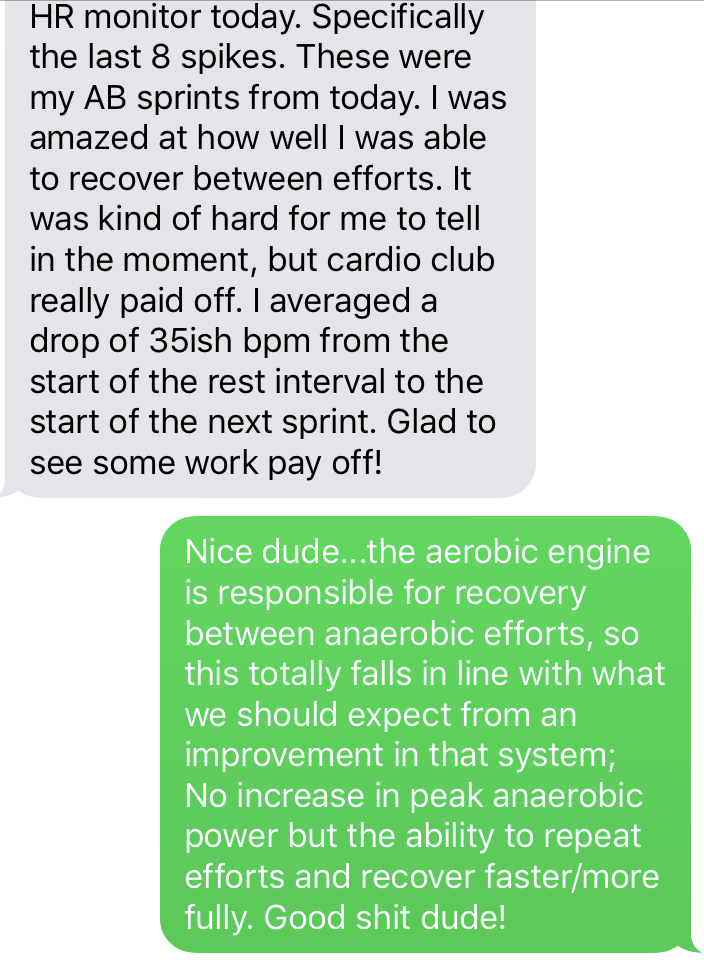More Blog Posts
Bring A Friend Saturday is BACK!
Athletes of the Month - August
Did You Know? Aerobic Engine…
Lately, so much of the content put out has to do with all of the many events that have already come so far in 2019. We’ve had an incredibly busy and exciting year at CFD already this year! However, a downside of so much excitement is that so much of the ‘bread-and-butter’ of what we do as strength and conditioning coaches get pushed to the side to make room for events, gatherings, and the like. I wanted to take a quick moment to spotlight some interesting and very relevant data that came as a result of the conclusion of the most recent Cardio Club program that just finished up less than 2 weeks ago.

It doesn’t take a S&C professional to know that the aerobic engine is responsible for utilizing oxygen as a primary fuel source for constant, cyclical movement/contractions. However, many don’t realize that yet another benefit to improving the aerobic engine is that it facilitates recovery BETWEEN anaerobic efforts through a process known as the Krebs Cycle, which is (very simply put) the body’s way of restoring ATP (usable energy) via oxygen (breathing).
What this means is that having a big aerobic engine allows you to recover faster from these intense, all-out efforts that primarily use fuel substrates other than oxygen (ATP/CP/glycogen/lactate) so that you can repeat those efforts more fully (repeatability) and with less rest (more often).

Note: J
Anyway, I thought the example was interesting and hope you all find it useful, insightful, and perhaps even somewhat motivating or inspiring to continue to trust the process and Stay the Course. As we all develop from different starting points and have differing goals, I want to continue to offer ways we can focus our improvements in areas that suit our wants, needs, goals, and athletic profile strengths/weaknesses – hence the conception of the supplementary programs.
If you’re interested in those or in hopping on an individualized program design tailored specifically for you, please don’t hesitate to shoot me an e-mail and start a conversation! Questions are free and I always enjoy having interesting discussions with people.
Keep on the lookout for an upcoming Gymnastics Club program as well as another shot at Foundational Strength 1 sometime this Spring 2019 (Exact launch date TBD)
Stay the Course
Not a member? Sign up for an Intro Class today! The next Intro class takes place on April 6th at 10:00, and Foundations starts the next week (April 9
RSVP to the free Intro Class here!



